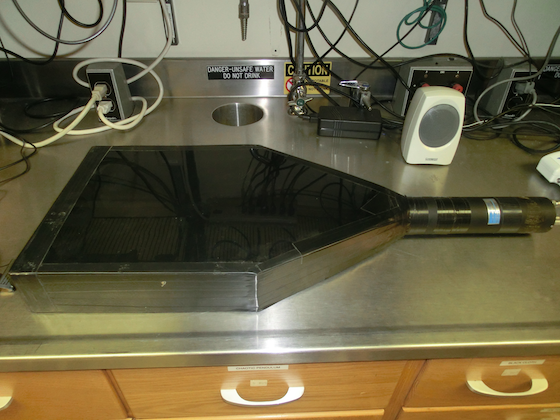Muon Lifetime
This is an interesting experiment: you will measure the halflife of a subatomic particle that is generated by random cosmic rays and has a lifetime of a couple microseconds.
This experiment works reasonably well, although the quality of the data has slumped over the last couple years. The experiment does take quite some time to collect data, so it's a good idea to start the experiment then go do some other experiments for a week or two while the data accumulates.
 |
Reading
- Here is an experiment manual from a different class that describes the experiment.
- Very interesting lab description from MIT that includes some other experiment ideas we haven't tried at CSUC yet.
- See chapter 5 of "Experiments in Modern Physics" by Melissinos also.
Questions
- Explain what the TAC does for you in this experiment.
- Explain what the MCA does for you in this experiment.
- Explain how you will calibrate your MCA.
- Conceptually, it would seem that measuring total activity of a sample as a function of time would be a sensible way of measuring halflife. Here, you are measuring lifetimes of individual particles sequentially, producing a histogram of lifetimes, and fitting the resulting histogram to an exponential curve. Explain how these two measurements are really the same thing.
Location
Room 108, drawer 108.53.
Equipment needed
- Muon hodoscope
- Spectech Multi-Channel Analyzer
- Oscilloscope (Optional, but very useful!)
- 450 Research Amplifier
- 1407 Pulse Pair Generator
- 420A SCA (optional)
- 566 TAC
- HV supply for hodoscope PMT
Cautions/hazards
- Muon decay creates mu nutrinos, which are highly penetrating subatomic particles. (Of course, you'll get the same nutrino flux whether you do the experiment or not!)